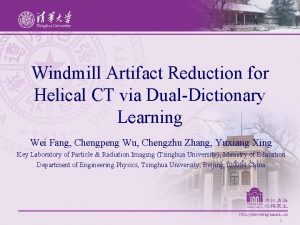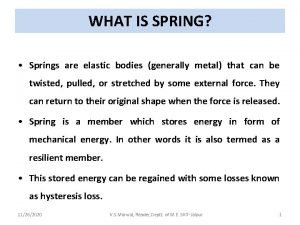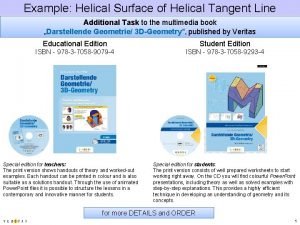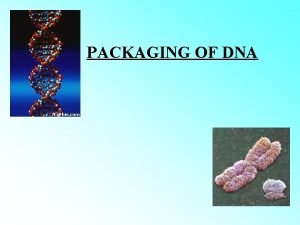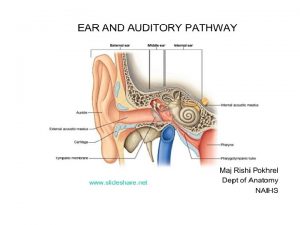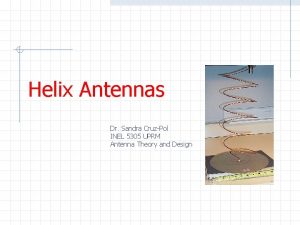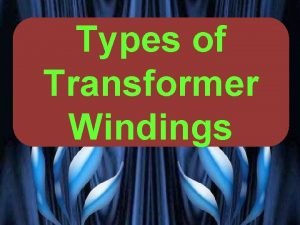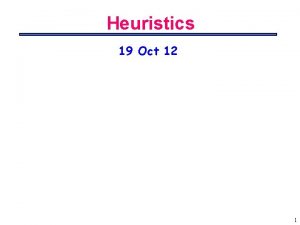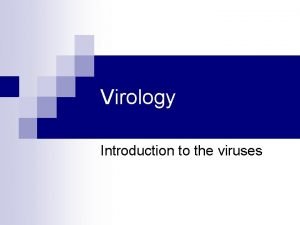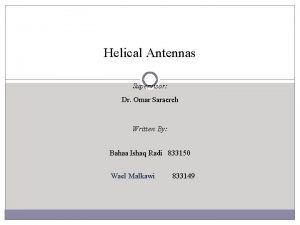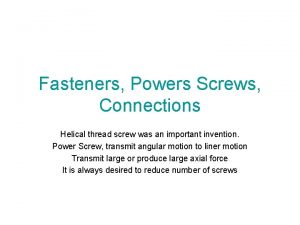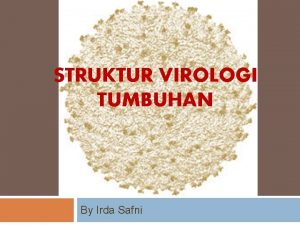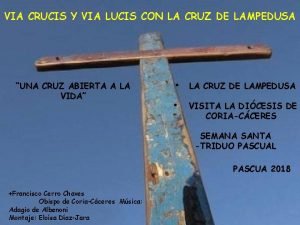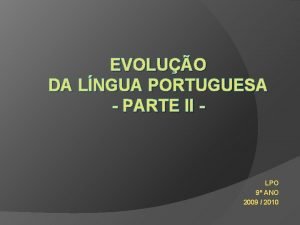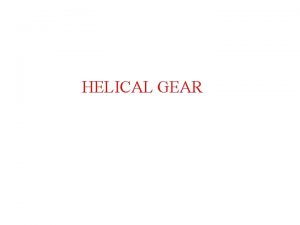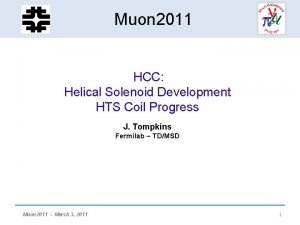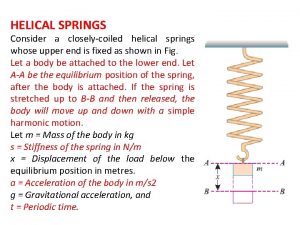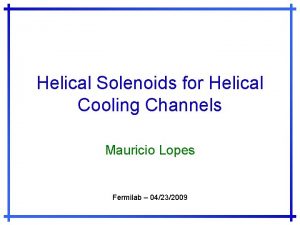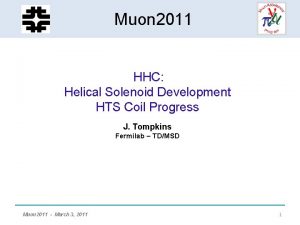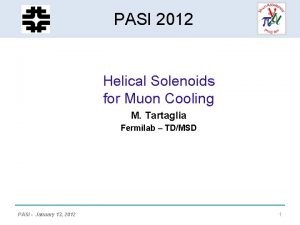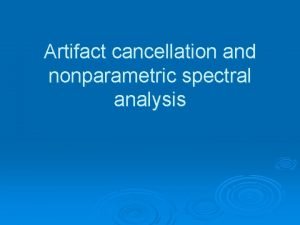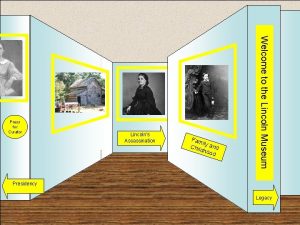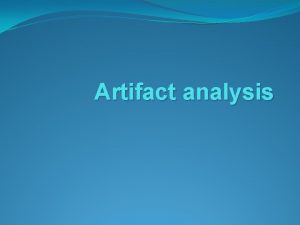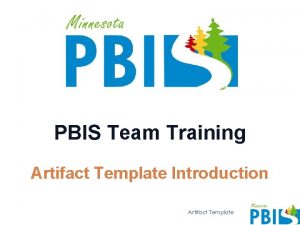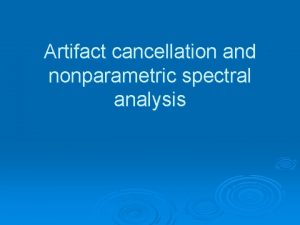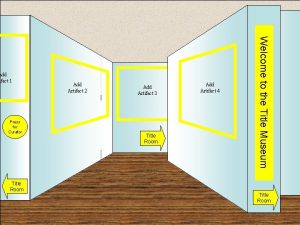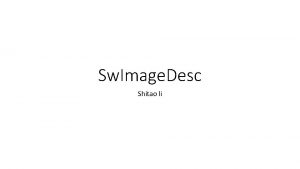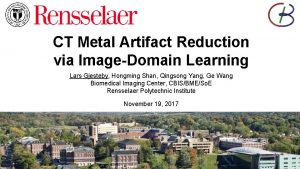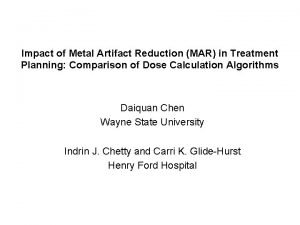Windmill Artifact Reduction for Helical CT via DualDictionary




















- Slides: 20

Windmill Artifact Reduction for Helical CT via Dual-Dictionary Learning Wei Fang, Chengpeng Wu, Chengzhu Zhang, Yuxiang Xing Key Laboratory of Particle & Radiation Imaging (Tsinghua University), Ministry of Education Department of Engineering Physics, Tsinghua University, Beijing 100084 China 1

Outline • • • Problem & Motivation Background & Related Work Methodology Results Conclusion and Future Work 2

Problem & Motivation • Windmill artifacts have plagued CT since the introduction of multi-slice. • The limitation of dose and requirements about scanning speed need the pitch to be large, thus intensifying the windmill artifact problem. • The metal material in the object makes it easy to generate windmill artifacts. 3

Problem & Motivation Objective : reduce windmill artifacts as much as possible while keeping the structure components without introducing new artifacts. 4

Background & Related Work • The artifact removal algorithms can be coarsely divided into three categories: – Pre-processing methods – Iterative reconstruction approaches – Post-processing algorithms Key: Artifacts detection and representation ! 5

Background & Related work • In 2013, Xing et al used two-dictionary learning method to solve the limited angle problem. • In 2014, Chen et al proposed a image domain approach called artifact suppressed dictionary learning method to improve low dose CT images. • In 2016, Cui et al proposed a learning-based artifacts removal method for removing streak artifacts in lowdose CT images. 6

Methodology Proposed framework 7

Methodology Artifact detection • Motivation: artifacts only appears in a small part of a image. speedup the artifact reduction process. • Method: using logistic regression to classify patches. • θ is trained with data sets selected beforehand. 8

Methodology Probability of carrying artifacts for different patches 0. 7 9

Methodology Sparse representation and artifacts removal • Discriminal dual dictionary: • Structure dictionary : trained from images clear of artifacts • Artifact dictionary : trained from artifacts • Dictionary training method: K-SVD 10

Methodology Sparse representation and artifacts removal • Sparse representation using OMP: • Artifacts removal: • Set the coefficients corresponding to artifact dictionary atoms to zero. ! y k s i R 11

Methodology Introduction of dictionary refinement The largest component in sparse representation is very probably structure component! 12

Methodology Flowchart of the method 13

Experimental Results Simulation study Atoms for structure Atoms for artifacts sparsity: 5 iteration: 40 Structure dictionary atom number: 4096 Artifact dictionary atom number: 4096 14

Experimental Results with windmill artefacts After artifact suppression Simulation study Sparsity: 10 Image size: 512× 512 Patch size: 32× 32 with windmill artefacts After artifact suppression 15

Experimental Results Dictionaries Trained from Practical Luggage CT images Atoms for structure Atoms for artifacts sparsity: 5 iteration: 40 Number of structure dictionary atoms: 4096 Number of artifact dictionary atoms: 4096 16

Experimental Results Test Results on Practical Luggage CT images Original Artifact suppressed The difference Sparsity: 10 Image size: 512× 512 Patch size: 32× 32 17

Further study with deep learning preliminary results of deep learning on artifact reduction problem. • 1000 training sets • 512*375 • Convergence in 400 epoch original expected achieved 18

Conclusion and Future Work • artifact suppression via dual-dictionary learning (ASDDL): Ø Discriminal dictionaries for artefact and structure representation are effective. Ø Careful refinement of dictionaries could be important. Ø Machine learning methods are useful in artefact detection and reduction. • Future work: Ø More tests of deep learning method on artifact reduction problem. Ø Processing parallelization of different patches 19

Acknowledgement This work is supported by grants from the National Natural Science Foundation of China (No. 11275104 and 11435007) and National key research and development program (No. 2016 YFF 0101304). Thanks ! 20
 Windmill artifact
Windmill artifact Helical spring formula
Helical spring formula Helical
Helical Octomer
Octomer Helix crus
Helix crus Uprm inel
Uprm inel Helical winding in transformer
Helical winding in transformer Helical ribbon mixer
Helical ribbon mixer Fixed space regainer
Fixed space regainer Helical path
Helical path Biosynthesis of rna viruses
Biosynthesis of rna viruses Helical antenna gain
Helical antenna gain Helical motion
Helical motion Helical thread screw
Helical thread screw Struktur virus tmv
Struktur virus tmv Lummus helical baffle heat exchanger
Lummus helical baffle heat exchanger Decimo quinta estacion via crucis
Decimo quinta estacion via crucis Palavras convergentes
Palavras convergentes Via positiva and via negativa
Via positiva and via negativa Que significa vialucis
Que significa vialucis Sistema piramidal y extrapiramidal
Sistema piramidal y extrapiramidal
